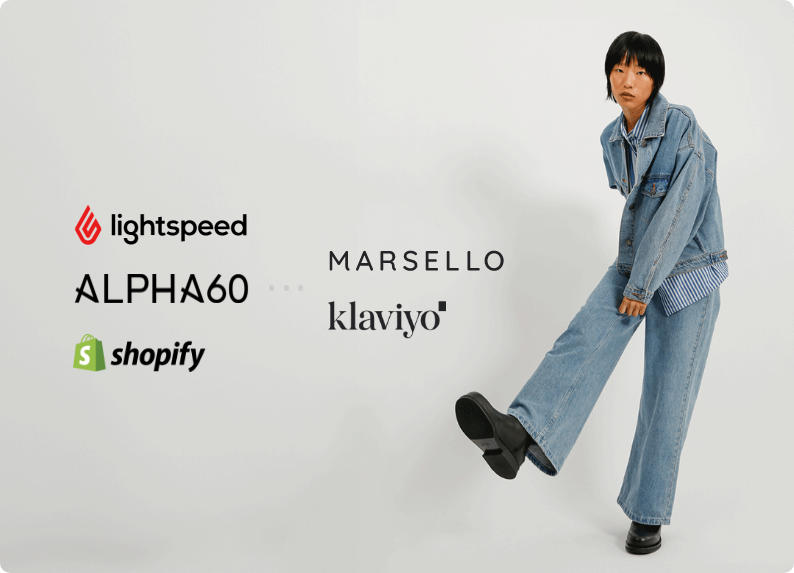
Most loyalty programs still operate like rebate machines: spend, earn, redeem, repeat. They work in the short term, but they often train customers to chase deals rather than commit to your brand. Recent research—and a few telling brand examples—suggest a better way: design your program to grow connection, not just satisfaction.
Below, I’ll unpack what the research actually found, explain the mechanics of why connection outperforms discounts, and show how brands like ALPHA60 and Adidas put this into practice. I’ll also outline practical, brand-focused reward ideas that deepen identification without getting lost in operational detail.
What the research really says (and why it matters)
A recent study set out to answer a simple question: Do loyalty programs keep customers coming back—and why? The researchers compared two pathways:
-
Satisfaction — “My last transaction went well. I’m happy with the price/service.”
-
Connection/identity — “This brand fits me. It feels familiar, trusted, and ‘for people like me.’”
Both paths contribute to retention, but the analysis found that connection is the stronger driver.
In other words: keep the experience smooth and redemptions easy, but don’t expect satisfaction alone to create loyalty. The behavior that looks like “loyalty” is more often the result of belonging than bargain-hunting.
Why this matters:
-
Discount-heavy programs tend to spike short-term sales but weaken long-term stickiness.
-
Connection-first programs may look quieter at first, but they build durable preference that competitors’ coupons can’t easily disrupt.
Why connection works better than discounts (the mechanics)
Here’s what’s happening beneath the surface when brands design for belonging:
-
Identity effects: When people see their values and tastes reflected, they start using “we/us/my brand” language. That identity link guides future choices even when alternatives are cheaper. Think how common it is to hear: "I'm an Apple person."
-
Signaling: Access, invitations, and recognition signal status and closeness (“I’m an insider here”). Signals are sticky because they’re social; people like being seen—and being seen as part of something.
-
Reciprocity: Gestures framed as thanks (not bait) activate a norm: “they did something for me; I want to keep engaging.” Discounts framed as payment for purchase feel transactional, not reciprocal.
-
Switching friction (psychological): Community creates a soft cost to leaving. Abandoning a brand can feel like stepping out of a group you identify with, not just forfeiting a coupon. It can be pride too. A lifelong Apple user buying a Samsung phone can feel like you are 'admitting' you were 'wrong'. People like to believe that their purchase decisions were rational. The power of brand is to make emotional decisions feel rational.
-
Memory formation: Experiences (events, co-creation, early looks) become stories people remember and tell. Stories compound; coupons don’t.
This is why “connection-first” isn’t code for “expensive.”
Read more: Do Loyalty Programs Work? A Psychological and Economic Analysis
Example 1: ALPHA60
What they do:
Australian fashion label ALPHA60 uses Marsello to run a rewards experience that behaves more like a relationship layer than a discount funnel. Think surprise-and-delight “thank yous,” not endless promo codes. The tone is human and appreciative: small, timely gestures that say “we noticed” rather than “buy now.” It relies heavily on understanding their customer, and the experience they expect from the brands they shop with.
Why it works:
-
The “reward” is recognition, in the form of a voucher.
-
Surprise moments feel like gifts, not negotiations. That activates reciprocity and positive word-of-mouth.
-
The program reinforces a brand narrative (“you’re part of our family”) rather than only a price incentive.
How to translate this pattern:
-
Introduce rewards that clearly reflect your brand (e.g., a limited patch, a custom pin, a small sample tied to a new drop).
-
Frame vouchers, discounts, or other benefits as gratitude (“thanks for being with us”), not as a bargain the customer “earned.”
-
Pair any monetary reward with a relationship moment. A short note from a designer, a behind-the-scenes image, or a first-look link.
Example 2: Adidas
What they do:
Beyond points or tiers, Adidas sustains loyalty by “tapping into the underground”: partnering with rising independent creators and emerging micro-brands, staying close to the scenes that shape streetwear. As a result, customers feel part of a community whose taste and identity Adidas helps curate.
Why it works:
-
Collaboration acts as a cultural bridge. Customers don’t just buy a product; they join a conversation.
-
Credibility in the right subcultures creates identity lock-in—a reason to return that has nothing to do with price.
-
Each collaboration is a fresh touchpoint that keeps the brand top-of-mind and emotionally relevant.
How to translate this pattern:
-
Build access benefits around culture: early looks at collabs, design AMAs, member votes on colorways.
-
Spotlight community creators and give members a way to participate (e.g., submit looks; get featured).
-
Treat collaborations as member content first (stories, process, context), then as products.
@trendyjosh__ @adidas is doing what every legacy brand should be doing, staying tapped in with the underground, not just the algorithm and what's "safe". What y'all think 🤔🚨 #fashiontiktok #fashionnews #streetwear #underground #clothingbrand ♬ Bossa Nova jazz that seems to fit in a cafe(1433079) - TAKANORI ONDA
The coffee shop test
Consider two shops:
-
Shop A (discount-first): Buy nine, get the tenth free. Redemptions are smooth, points are clear. You’re satisfied, until a rival offers a better deal. There’s no soft cost to switching.
-
Shop B (connection-first): Members get early tastings of new beans, a simple tier name that signals community (e.g., Neighbor → Regular → Local), and an occasional surprise (a locally made mug after a milestone). They keep a small photo board of members and feature one person’s “brew note” each month.
Same product, different feeling. The second shop builds identity and small social signals (recognition, participation). Over time, customers say “my café,” not just “that café with the stamp card I have somewhere in my wallet.”
The research predicts the outcome: Shop B retains more reliably.
"People like to believe that their purchase decisions were rational. The power of brand is to make emotional decisions feel rational."
— Alice Cresswell, Marsello
How to make your program more brand-focused
Below are some ideas to help you pivot from pure discounts toward access, experience, and recognition. These work in retail, DTC, hospitality, and services with minor adaptation.
1) Access: make members feel “inside”
-
Early product drops with a 30–60 second note from the creator or buyer explaining the why.
-
Priority slots for limited services (repairs, alterations, fittings).
-
Waitlist fast-pass and “member line” at events or busy times.
-
Members-only previews (in-store after-hours or short virtual walk-throughs).
Why it helps: Access is a status signal and a time-saver. It’s felt value that builds connection without eroding margin.
2) Experiences: create memories (and stories)
-
Micro-events: designer Q&As, tasting flights, styling sessions, run clubs.
-
Behind-the-scenes: studio tours, process videos, sample room peeks.
-
Beta trials: let members test a formula, fit, or feature before launch.
-
Co-creation: vote on a pattern, name a seasonal item, choose a charity partner.
Why it helps: Experiences produce shareable stories and a sense of co-ownership.
3) Recognition: show you see the person, not just the purchase
-
Milestone thank-yous that are small but distinctively yours (pins, patches, mini-samples, limited postcards).
-
Member spotlights across email or in-store screens (opt-in).
-
Tenure markers (subtle app badge, special packaging insert after a year, “founding member” tag).
Why it helps: Recognition taps status and belonging without conditioning customers to expect bigger discounts.
4) Value (kept modest and sustainable)
-
Token monetary rewards (vouchers, discounts) framed explicitly as appreciation.
-
Simple, transparent redemption, because satisfaction is still table stakes.
Why it helps: You preserve margins while keeping the experience friction-free.
What to measure (to confirm you’re building connection)
You don’t need a complex dashboard—just metrics that indicate belonging, not only bargain response.
-
Repeat purchase rate and time between purchases, by cohort.
-
Engagement with “connection” benefits: open/click/claim rates for early access, event RSVPs, co-creation votes.
-
Referral rate (members inviting others, which signals tribe behavior).
-
Qualitative language in reviews/DMs/support: look for “we/us/my brand,” mentions of feeling noticed or included.
Read more: How to Turn Customer Loyalty Data into a Competitive Advantage
Bringing the examples together
-
ALPHA60 shows that how a reward is delivered matters as much as what it is. A small, on-brand surprise framed as gratitude sends a stronger loyalty signal than a larger, purely transactional discount.
-
Adidas shows that loyalty can be earned outside the program by investing in culture and collaboration. When members feel a brand represents their scene, the formal program (if any) becomes an amplifier, not the sole engine.
Both point to the same principle found in the research: loyalty grows when customers feel the brand is “for people like me.” Discounts can nudge behavior; belonging sustains it.
Bottom line
Design your program to behave like membership to a club. Keep the basics smooth, but weight your benefits toward access, experiences, and recognition. Use monetary rewards sparingly and as a genuine “thank you.” The outcome you’re aiming for isn’t just one more purchase, it’s a customer who would feel they’re leaving a community if they walked away.
Ready to launch a strategic loyalty program?


